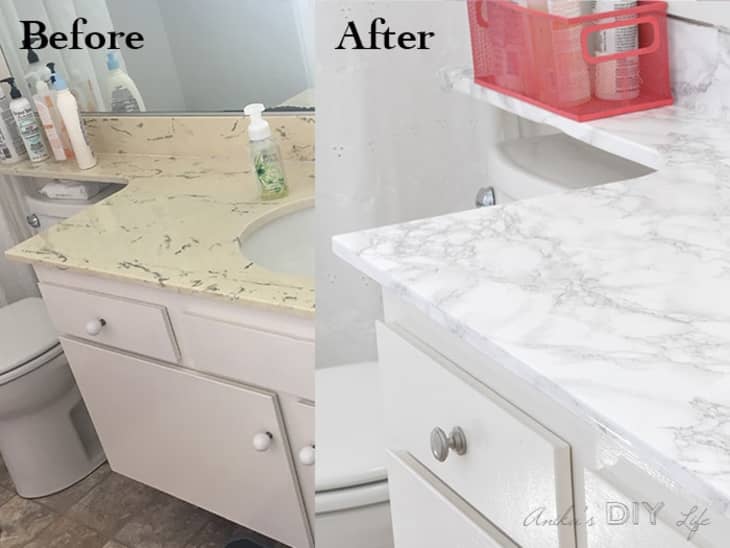Refinishing laminate countertops is an effective and budget-friendly way to give your kitchen or bathroom a fresh, updated look without the expense and hassle of a full renovation. Laminate countertops are popular due to their affordability and durability, but over time, they can start to show signs of wear and tear, including scratches, stains, and fading. Rather than replacing the entire countertop, which can be costly and time-consuming, refinishing offers a DIY solution that allows you to transform your existing surface into something that looks almost new. The process involves several steps, including cleaning, sanding, repairing, priming, painting, and sealing. By taking the time to carefully plan and execute each step, you can achieve a professional-looking finish that will extend the life of your laminate countertops and enhance the overall aesthetic of your space.
The first step in refinishing your laminate countertops is to thoroughly clean the surface. This might seem like an obvious step, but it’s crucial to remove all dirt, grease, and grime before you begin. Use a degreasing cleaner or a mixture of warm water and dish soap to scrub the entire surface. Pay special attention to any areas that are particularly dirty or stained, as these spots can affect how well the paint adheres later. After cleaning, rinse the countertop with clean water and dry it completely with a soft cloth. This step ensures that your countertop is free of any residue that could interfere with the sanding and painting process.
Once the countertop is clean and dry, the next step is sanding. Sanding the surface of the laminate is essential because it helps to rough up the smooth finish, creating a surface that the paint can grip onto. Start with a coarse-grit sandpaper, such as 120-grit, and sand the entire surface, including the edges. Use a sanding block or an electric sander for this step to ensure even pressure and coverage. After the initial sanding, switch to a finer grit, such as 220-grit, to smooth out the surface and remove any rough spots. Be sure to sand in a circular motion and apply consistent pressure to avoid creating gouges in the laminate. Once you’re done, wipe the surface with a damp cloth to remove any dust.
After sanding, you may notice some imperfections in the laminate, such as small cracks or chips. It’s important to repair these before moving on to the priming stage. Use a laminate repair paste or a two-part epoxy to fill in any damaged areas. Apply the repair material with a putty knife, smoothing it out as much as possible. Once the repairs have dried, sand them lightly to ensure the surface is smooth and level. This step will help create a flawless finish when you apply the paint.

With the surface prepped and repaired, it’s time to apply a primer. Priming is an essential step in the refinishing process because it helps the paint adhere better to the laminate and provides a uniform base color. Choose a primer that is specifically designed for laminate surfaces. Apply the primer using a high-quality brush or roller, working in long, even strokes to avoid leaving brush marks. Allow the primer to dry completely, following the manufacturer’s recommended drying time, which is usually between 4 to 6 hours. Depending on the coverage, you may need to apply a second coat of primer to ensure that the entire surface is evenly coated.
Once the primer is dry, you can begin painting. Select a high-quality paint that is suitable for countertops, such as an acrylic or epoxy-based paint. These types of paints are durable and resistant to moisture, making them ideal for use in kitchens and bathrooms. Apply the paint in thin, even coats, allowing each coat to dry completely before applying the next. This process may require several coats to achieve the desired finish, so be patient and take your time to avoid streaks or uneven coverage. Use a high-density foam roller for a smooth finish, and avoid overworking the paint, which can create bubbles or texture.
After the final coat of paint has dried, it’s time to apply a protective topcoat. The topcoat is essential for sealing the paint and providing a durable, water-resistant finish. Choose a clear, non-yellowing polyurethane or epoxy sealer specifically designed for countertops. Apply the topcoat in thin, even layers using a foam brush or roller, and allow each layer to dry thoroughly before applying the next. Depending on the type of sealer you use, you may need to apply two or more coats to ensure maximum protection. Once the final coat is dry, your refinished laminate countertop will be ready for use.
It’s important to note that while the refinishing process is relatively straightforward, it does require time and attention to detail. Each step, from cleaning and sanding to painting and sealing, plays a crucial role in the final outcome. Skipping or rushing through any part of the process can result in a less-than-perfect finish that may not hold up over time. Additionally, working in a well-ventilated area and wearing protective gear, such as gloves and a mask, is essential to protect yourself from fumes and dust.
One of the benefits of refinishing your laminate countertops is the ability to customize the color and finish to suit your personal style. Whether you prefer a sleek, modern look with a high-gloss finish or a more traditional, matte appearance, there are paints and sealers available to achieve your desired effect. You can even get creative with techniques like faux marbling or speckling to add visual interest and texture to your countertops. Just be sure to practice these techniques on a spare piece of laminate or a hidden area of your countertop before applying them to the entire surface.
After completing the refinishing process, it’s important to take care of your newly refinished countertops to ensure they stay looking great for years to come. Avoid placing hot pots and pans directly on the surface, as this can damage the paint and sealer. Use cutting boards and trivets to protect the finish from scratches and heat. Clean the countertops regularly with a mild soap and water solution, and avoid using harsh chemicals or abrasive cleaners that could dull the finish or cause it to peel.
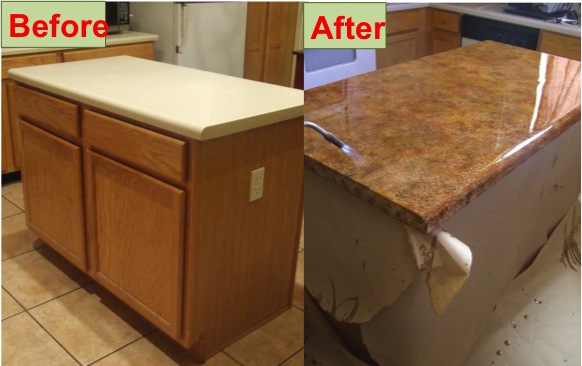
Another consideration is the long-term durability of refinished laminate countertops. While the refinishing process can significantly extend the life of your countertops, it’s not a permanent solution. Over time, the paint and sealer may begin to show signs of wear, especially in high-use areas like around the sink or stove. However, with proper care and maintenance, refinished countertops can last for several years before needing to be touched up or refinished again.
One of the challenges of refinishing laminate countertops is achieving a smooth, professional-looking finish, especially if you’re new to DIY projects. It’s important to take your time and be patient throughout the process. If you’re unsure about any step, consider doing some research or watching tutorial videos to gain a better understanding of the techniques involved. You may also want to practice on a small, less visible area of the countertop before tackling the entire surface.
Finally, it’s worth considering the environmental impact of refinishing your laminate countertops. By choosing to refinish rather than replace your countertops, you’re reducing waste and minimizing the environmental footprint of your home improvement project. Many of the materials used in the refinishing process, such as water-based paints and sealers, are also more environmentally friendly than traditional oil-based products. By making thoughtful choices throughout the process, you can achieve a beautiful, durable finish while also doing your part to protect the environment.
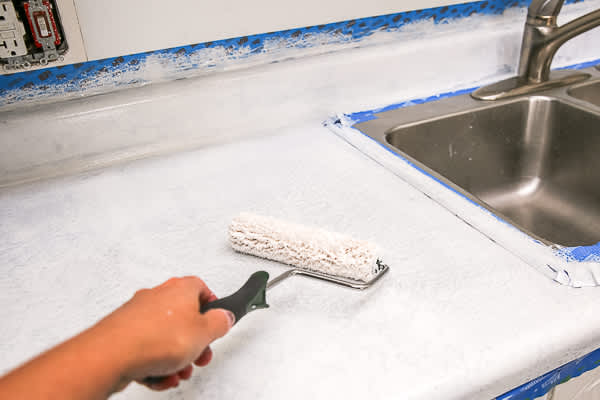
Common Mistakes to Avoid
One of the most common mistakes people make when refinishing laminate countertops is not properly cleaning and preparing the surface before painting. Skipping the cleaning step or not sanding the surface enough can result in poor paint adhesion, leading to peeling or chipping down the line. Another mistake is using the wrong type of primer or paint. It’s essential to use products specifically designed for laminate surfaces to ensure a long-lasting finish.
Additionally, rushing through the process and not allowing sufficient drying time between coats can lead to a less durable finish. Another error is failing to apply a protective topcoat, which is crucial for sealing the paint and providing a water-resistant barrier. Lastly, not taking proper safety precautions, such as wearing a mask and working in a well-ventilated area, can expose you to harmful fumes and dust.
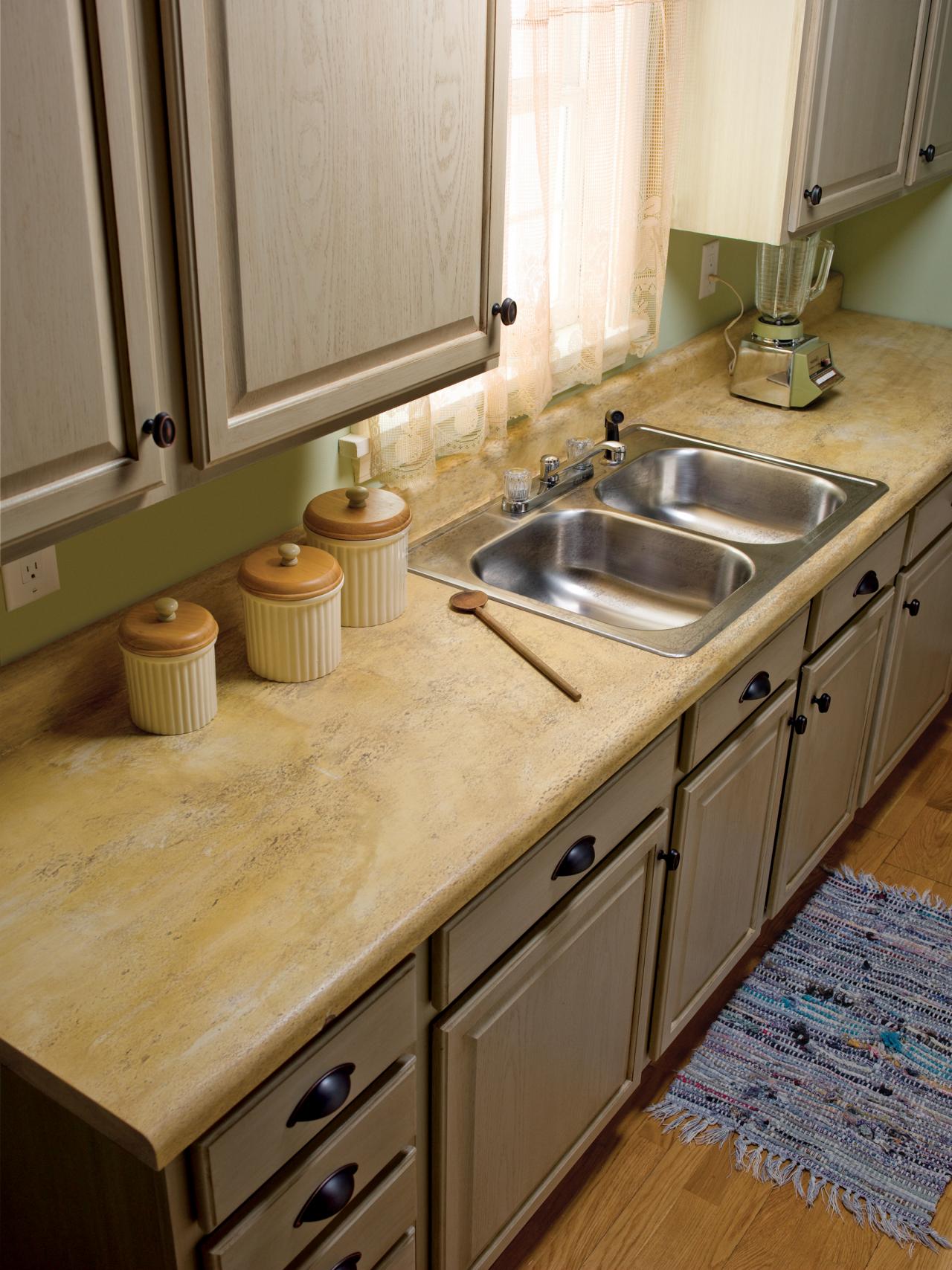
How long does the refinishing process take?
The refinishing process typically takes several days to complete, depending on the drying time required between each step. Cleaning and sanding can usually be done in a few hours, but you’ll need to allow the primer, paint, and topcoat to dry thoroughly between coats. It’s important not to rush through the process, as proper drying is essential for a durable finish. Overall, you should plan for the project to take about 3 to 5 days from start to finish.
Can I use regular paint for refinishing laminate countertops?
No, regular paint is not recommended for refinishing laminate countertops because it may not adhere well to the surface and could peel or chip over time. Instead, use a paint that is specifically formulated for laminate or countertops, such as an acrylic or epoxy-based paint. These types of paints are designed to withstand moisture, heat, and daily wear and tear, making them ideal for kitchen and bathroom surfaces.
How durable is a refinished laminate countertop?
The durability of a refinished laminate countertop depends on the quality of the materials used and how well the refinishing process was executed. When done correctly, a refinished countertop can last several years, especially if you take care to avoid scratches, heat damage, and harsh chemicals. However, it’s important to note that refinishing is not a permanent solution, and the countertop may need to be touched up or refinished again in the future.

Can I refinish a countertop that has deep scratches or burns?
Yes, you can refinish a countertop with deep scratches or burns, but you’ll need to repair these areas before proceeding with the refinishing process. Use a laminate repair paste or epoxy to fill in deep scratches or burns, then sand the repaired areas smoothly before applying primer and paint. This extra step will help ensure a smooth, even finish that covers up imperfections.
Is it possible to change the color of my laminate countertop during the refinishing process?
Yes, one of the benefits of refinishing laminate countertops is that you can change the color to suit your taste. When choosing a new color, keep in mind that lighter colors can help make a space feel larger and brighter, while darker colors can add drama and depth. Be sure to use a paint that is compatible with the type of laminate you have and apply it in several thin coats for the best results.
How do I maintain my refinished laminate countertop?
To maintain your refinished laminate countertop, avoid placing hot items directly on the surface and use cutting boards to prevent scratches. Clean the countertop regularly with a mild soap and water solution, and avoid using abrasive cleaners that could damage the finish. With proper care, your refinished countertop should stay looking great for years to come.
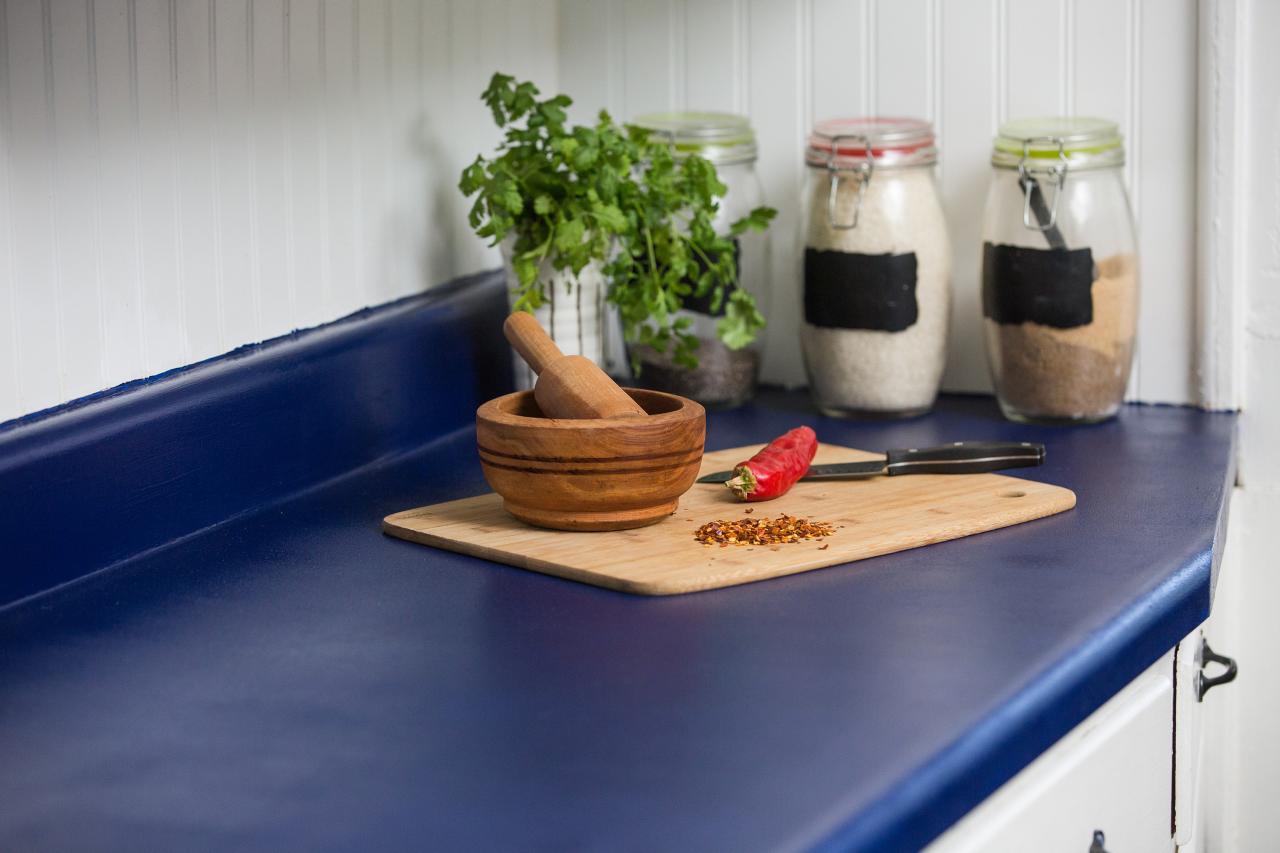
Cabinet and Countertop Refinishing & Resurfacing with Permaglaze

How my Painted Countertops Look
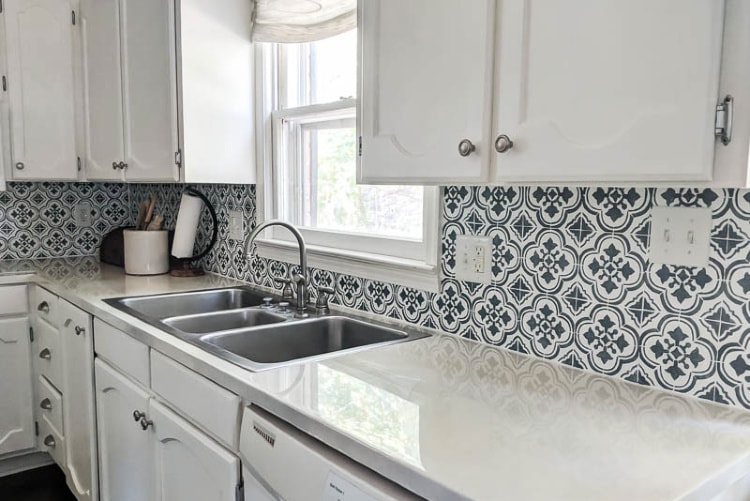
How to Paint Countertops – Looks Like Slate

Related articles:
- Retro Laminate Countertops
- Laminate Countertops For Bathroom
- Black Marble Laminate Countertop
- Painting Kitchen Laminate Countertops
- Quartz Laminate Countertops
- Laminate Countertops Installation
- Laminate Countertop For Kitchen Island
- Kitchen Island Laminate Countertops
- Cheap Laminate Countertops
- Laminate Countertops That Look Like Stone
